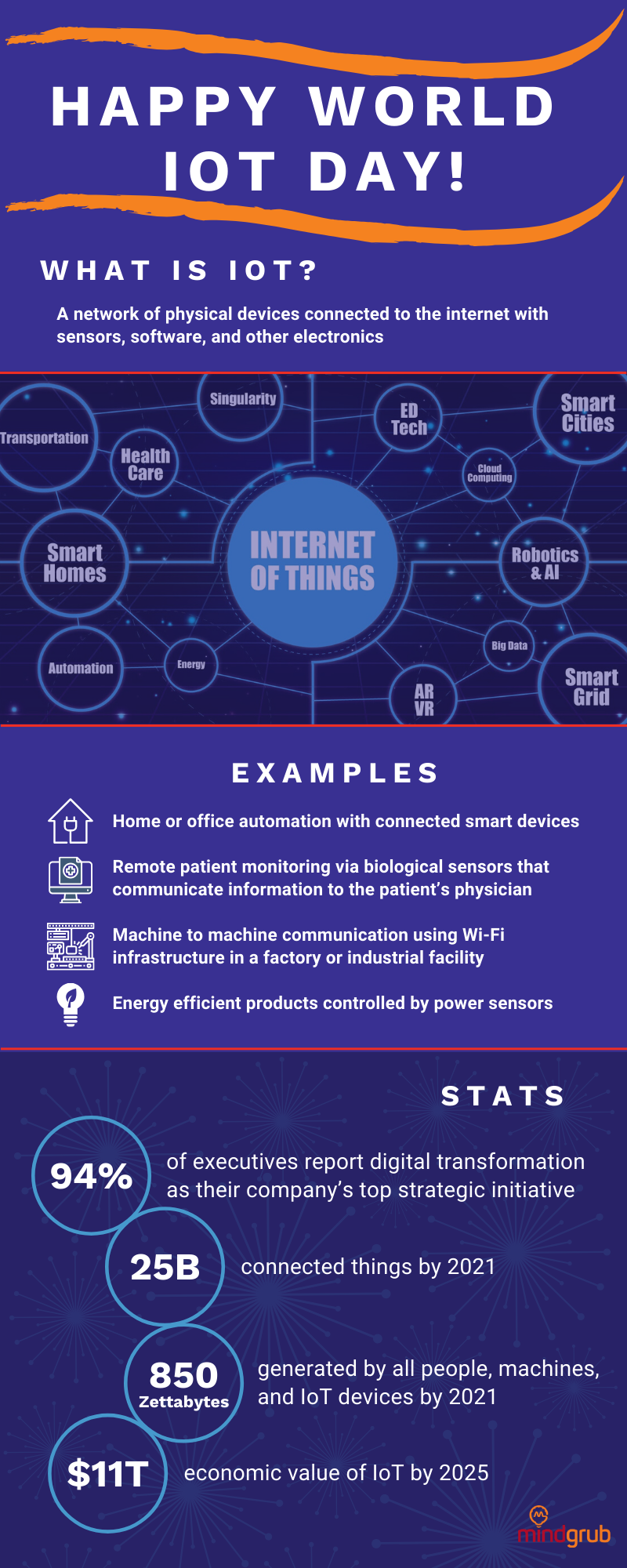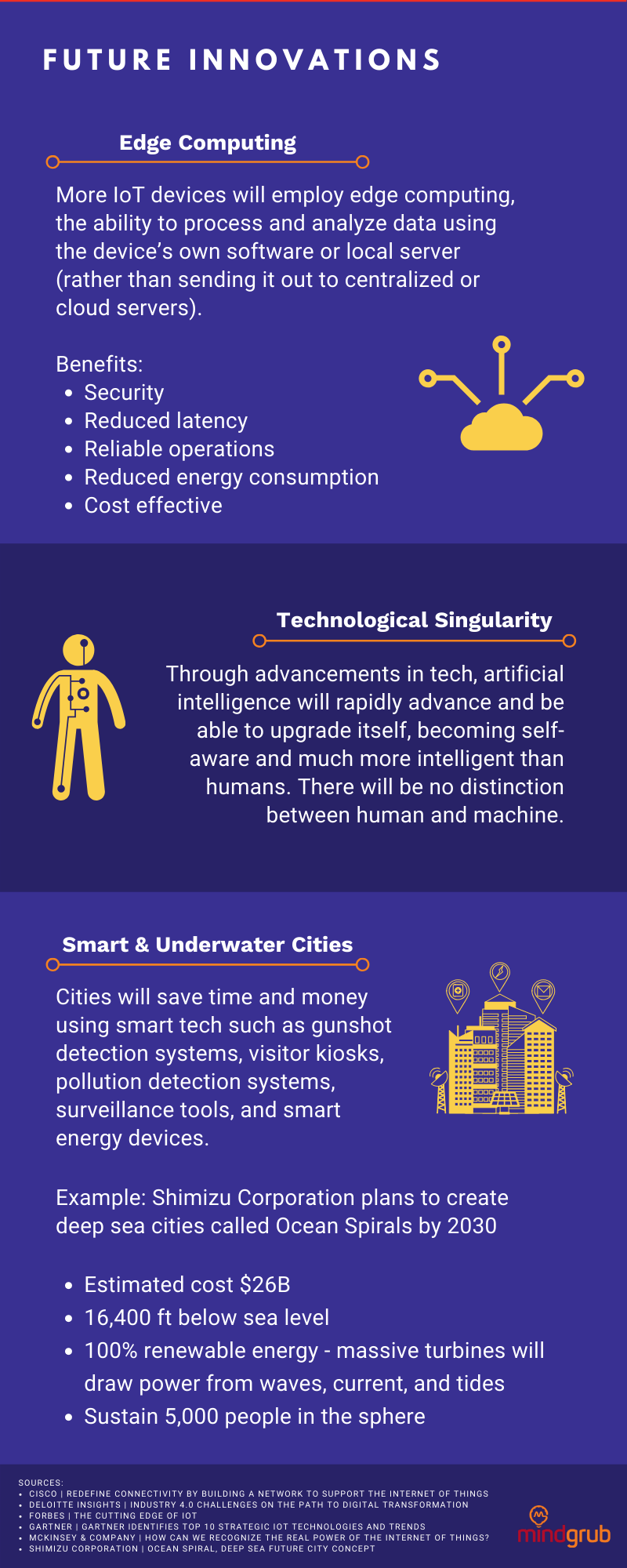Celebrating World IoT Day [Infographic]
World Internet of Things (IoT) Day was established on April 9, 2010 by the IoT Council to raise awareness for IoT, keeping the dialogue open about current IoT capabilities and future innovations.
With many of us staying home to slow the spread of the new coronavirus (SARS-CoV-2) and the disease it causes (COVID-19), we're grateful to have the internet and IoT devices. Now's a good time to think about how it all works and what innovations could help improve our lives under situations like this, especially as the demand for energy continues to increase exponentially and the effects of global climate change intensify.
In celebration of World IoT Day, let's take a glimpse into what's happening with IoT.
Interested in learning more about IoT? Check out this article on mobile app integrations.
We're also here to help! If your business has been negatively impacted by the coronavirus pandemic and you're looking for assistance:
- Head on over to Maryland Business Relief Wizard to determine your eligibility for federal, state, and local financial relief programs, or
- Drop us a line below for help transitioning your operations to digital.



